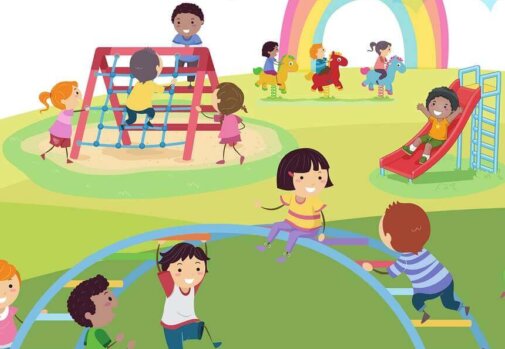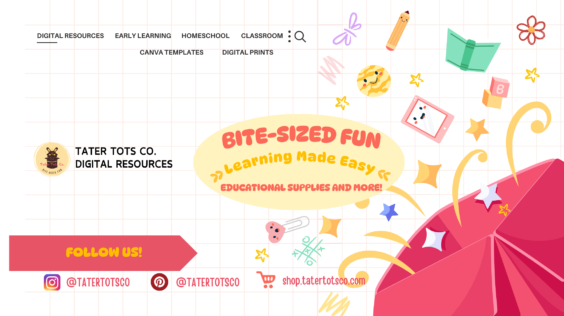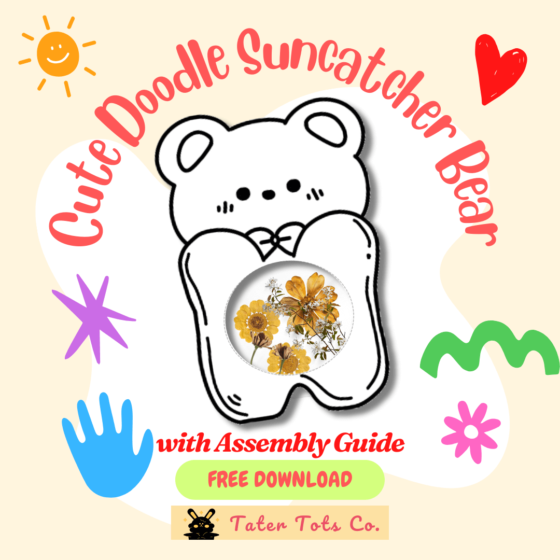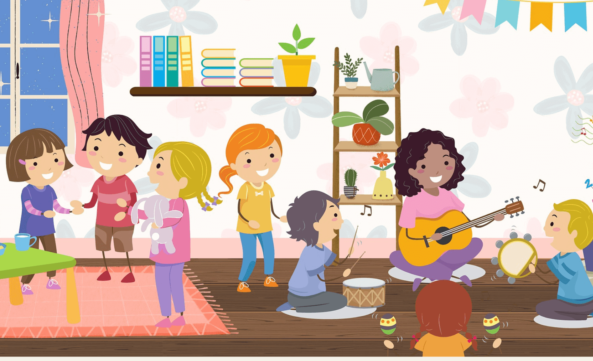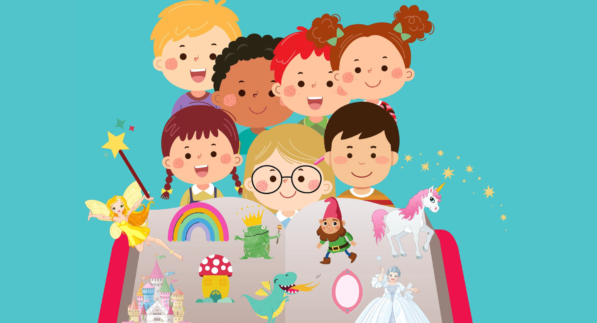
Introduction
Holidays are an exciting time for preschoolers. As they wait for Santa Claus, winter break, and other festivities, it’s a great opportunity to engage them in fun and educational activities. One such activity is teaching them scissor skills. Learning how to use scissors is an essential skill that can help preschoolers with their fine motor development, hand-eye coordination, and more.
However, teaching preschoolers how to use scissors can be challenging. That is why we’ve put together this comprehensive guide on how to teach scissor skills to preschoolers during the holiday season. This guide includes free printable worksheets, tips, and tricks to make the process fun and engaging for both you and your child.
By the end of this post, you’ll be well-equipped with all the tools and knowledge you need to help your preschooler develop their scissor skills while having fun during the holidays.
Related Articles:
Free Cute Food Theme Cutting Worksheets for Preschoolers
4 Free Printable Spring-Themed Cutting Practice Worksheets for Preschoolers
Importance of teaching scissor skills to preschoolers
Teaching scissor skills to preschoolers may seem like a simple task, but it holds significant importance in their overall development. Scissor skills not only enhance fine motor skills but also contribute to the development of hand-eye coordination, bilateral coordination, and spatial awareness.
Preschoolers need to develop strong hand muscles and dexterity to perform various tasks, such as writing, drawing, and manipulating objects. By introducing scissor skills at an early age, you can lay a strong foundation for their future academic and creative endeavors while fostering their independence and self-confidence. As they learn to use scissors proficiently, they gain a sense of achievement and empowerment. This newfound independence allows them to engage in activities that require cutting, such as arts and crafts projects or even simple tasks like cutting out shapes or pictures.
Scissor skills also provide an avenue for creativity and imagination. Preschoolers can explore different ways of cutting and creating their unique designs. This promotes their cognitive development, problem-solving skills, and artistic expression.
It’s essential to remember that teaching scissor skills should be done under adult supervision to ensure safety. Using child-friendly scissors with rounded edges and providing guidance on proper handling and cutting techniques are crucial aspects of this process.
Benefits of enhancing scissor skills during the holiday season
Enhancing scissor skills during the holiday season is not only fun but also beneficial for preschoolers. Engaging in scissor activities can help children develop fine motor skills, hand-eye coordination, and bilateral coordination. These skills are crucial for their overall development and will benefit them in various aspects of their lives.
Firstly, fine motor skills play a significant role in a child’s ability to perform precise movements with their hands and fingers. Using scissors requires the child to hold and manipulate the tool, which strengthens their finger muscles and improves their grip. This improved dexterity will not only assist them in cutting shapes and lines but also in activities such as writing, drawing, and buttoning clothes.
Secondly, scissors activities promote hand-eye coordination, which is the ability to coordinate visual information with hand movements. When cutting along lines or shapes, children need to visually track the position of their scissors while simultaneously controlling their hand movements. This coordination between their eyes and hands helps them develop essential skills for tasks like handwriting and tying shoelaces.
Lastly, scissors activities enhance bilateral coordination, which is the ability to coordinate both sides of the body. Cutting with scissors requires the child to use both hands simultaneously, with one hand controlling the paper and the other operating the scissors. This bilateral coordination strengthens the connection between the brain’s left and right hemispheres, thereby improving overall coordination and facilitating activities such as sports, playing musical instruments, and even everyday tasks like using utensils.
By introducing holiday-themed scissors activities, you can make learning these skills even more enjoyable for preschoolers. The festive worksheets and cutting tasks not only engage their creativity and imagination but also provide a meaningful context for practicing scissor use. Encourage children to cut out ornaments, snowflakes, or gift tags, fostering their fine motor skills while also adding a touch of holiday cheer to their crafts.
What kind of scissors to use?
For young kids, try to start with training or safety scissors. These scissors usually come with blunter blades. They have safety locks or training levers, which are great for “locking” or closing the scissors for more safety.
Here are some examples that can be purchased online. Even with training scissors, it’s important to supervise those little hands to ensure safety.
Understanding developmental milestones for scissor use in preschoolers
Understanding the developmental milestones for scissor use in preschoolers is crucial when teaching them this important skill. Scissor use requires a combination of fine motor skills, hand-eye coordination, and bilateral coordination. By having a clear understanding of what is developmentally appropriate for preschoolers, you can tailor your teaching approach accordingly.
At around 2 to 3 years old, preschoolers typically begin to show an interest in scissors and may attempt to use them. At this stage, they may be able to hold a pair of scissors with both hands but may struggle to open and close them correctly. Their cutting strokes may be uneven and random.
By the age of 3 to 4, preschoolers should be able to hold the scissors with one hand while using the other hand to stabilize the paper. They will start to develop more controlled cutting movements and be able to cut along straight lines.
Between the ages of 4 to 5, preschoolers will continue to refine their scissor skills. They should be able to cut along curved lines and make more precise cuts. They will also begin to cut simple shapes such as squares or triangles.
Finally, by the age of 5 to 6, preschoolers should have mastered the basic scissor skills and be able to cut complex shapes and navigate corners with ease.
It is important to keep in mind that every child develops at their own pace, so these milestones are just general guidelines. Some preschoolers may progress faster or slower in their scissor skills, and that is completely normal. However, if you notice significant delays or difficulties, it may be beneficial to consult with an occupational therapist for further guidance.
By understanding these developmental milestones, you can create age-appropriate activities and worksheets to help preschoolers develop their scissors skills. This will ensure that they are building a strong foundation and gaining confidence in using scissors, setting them up for success as they continue to refine this essential skill.
Tips for introducing scissors to preschoolers

Introducing scissors to preschoolers can be an exciting and important milestone in their development.
However, it’s essential to approach this activity with caution and provide proper guidance to ensure safety and effective skill-building. Here are some tips to help you introduce scissors to preschoolers:
- Choose child-friendly scissors: Look for scissors specifically designed for preschoolers. These scissors typically have rounded tips and are made of plastic, ensuring safety while learning. They are also easier for little hands to grip and control.
- Teach scissor safety: Before diving into scissor activities, have a conversation with your preschooler about scissor safety. Explain that scissors are tools, not toys, and should only be used under adult supervision. Emphasize the importance of holding the scissors correctly and keeping fingers away from the blades.
- Start with cutting practice: Begin by teaching your preschooler basic cutting skills on simple lines or shapes. Provide them with worksheets or printed practice sheets specifically designed for scissor practice. These worksheets often feature dotted lines or bold outlines, which assist preschoolers in developing their cutting accuracy and control.
- Demonstrate proper scissor grip: Show your preschooler the correct way to hold scissors. Encourage them to place their thumb in one hole and their fingers in the other, while keeping their index finger extended outside of the handles. This grip allows for better control and coordination while cutting.
- Encourage bilateral coordination: Cutting requires the coordination of both hands. Engage your preschooler in activities that promote bilateral coordination, such as tearing paper, threading beads, or playing with playdough. These activities help develop the necessary hand-eye coordination and strengthen the muscles required for scissor use.
- Provide guidance and support: Offer guidance and support as your preschooler practices cutting. Sit alongside them, gently guiding their hand and demonstrating the cutting motion. Encourage them to take it slow and be patient with themselves as they develop their scissor skills.
- Gradually increase difficulty: As your preschooler becomes more comfortable with basic cutting, gradually introduce more challenging tasks. This could include cutting along curved lines, making snips around the edges of shapes, or even cutting out simple pictures or patterns.
Remember, every child learns at their own pace, so be patient and celebrate their progress. By following these tips and providing a safe and supportive environment, you can help your preschooler develop their scissor skills and foster their creativity during the holiday season and beyond.
Creating a safe scissors environment for preschoolers
Creating a safe scissors environment is crucial when teaching preschoolers how to use scissors. As scissors can be sharp and pose a potential risk, it is important to take necessary precautions to ensure the safety of your little ones.
First and foremost, choose child-friendly scissors that are specifically designed for preschoolers. These scissors usually have rounded tips and plastic blades that are safer for children to handle. Additionally, opt for scissors with proper sizing and ergonomic handles that are comfortable for small hands to grip.
Next, set up a designated scissor area that is free from distractions and potential hazards. Clear away any objects that may obstruct their movements or pose a risk. It is also a good idea to use a non-slip mat or place a piece of thick fabric under their workspace to prevent the scissors from sliding around.
Supervision is key when preschoolers are using scissors. Always be present and attentive while they are practicing their scissor skills. Provide guidance and demonstrate the correct way to hold and handle scissors. Encourage them to keep their fingers away from the blades and to cut away from their bodies.
To further enhance safety, establish scissor rules and reinforce them consistently. Teach preschoolers the importance of using scissors only for their intended purpose, avoiding running or playing with scissors, and reminding them to put the scissors away after use.
Lastly, maintain a positive and encouraging atmosphere during scissors activities. Praise their efforts, provide constructive feedback, and celebrate their progress. Creating a safe scissors environment not only ensures their physical safety but also fosters a positive learning experience for preschoolers as they develop their scissors skills.
Fun and engaging scissors activities for holiday-themed learning
You can also incorporate holiday-themed worksheets into your scissor skill lessons. Look for free printable worksheets online that feature holiday-themed images such as Christmas trees, snowmen, or presents. These worksheets often include dashed lines for children to practice cutting along. By completing these worksheets, kids can develop their scissor control and accuracy while getting into the holiday spirit.
Remember to provide proper supervision and guidance during these activities to ensure safety. Demonstrate the correct way to hold and use scissors, and encourage children to take their time and cut slowly. Celebrate their progress and offer positive reinforcement to keep them motivated and engaged.
Step-by-step guide for teaching proper scissor grip
Teaching preschoolers the proper scissor grip is an important foundational skill that sets them up for success in their future cutting endeavors. By mastering this skill, they will not only be able to use scissors more effectively but also develop fine motor control and coordination.
Here is a step-by-step guide to help you teach your little ones the correct scissor grip:
- Start with the right scissors: Choose child-sized safety scissors that are specifically designed for small hands. These scissors have rounded tips and are easier for children to handle.
- Demonstrate the correct grip: Show your child how to hold the scissors with their dominant hand. The thumb should be in the smaller hole while the middle finger and index finger rest in the larger hole. The ring and pinky fingers should be curled and tucked into the palm for stability.
- Provide hand-over-hand assistance: Place your hand over your child’s hand to guide them through the proper scissor grip. Encourage them to practice opening and closing the scissors using this grip.
- Gradually release control: As your child becomes more comfortable, gradually reduce your hand-over-hand assistance. Allow them to practice cutting simple lines or shapes while you provide verbal cues and gentle reminders about the grip.
- Use visual aids: To reinforce the proper scissor grip, consider using visual aids such as posters or printable worksheets that illustrate the correct hand positioning. These visual reminders can serve as a helpful reference for your child during their cutting activities.
- Offer praise and encouragement: Celebrate your child’s efforts and progress. Positive reinforcement goes a long way in motivating them to continue practicing and refining their scissors skills.
Remember to be patient and understanding, as mastering the correct grip may take time.
By following these step-by-step instructions, you can help your preschoolers develop a proper scissor grip, setting them on the path to cutting success.
Remember to make the learning process fun and engaging, incorporating playful activities and colorful worksheets to keep their interest and enthusiasm high. With practice and support, your little ones will be confidently using scissors and enhancing their fine motor skills in no time!
How to track progress and celebrate scissor milestones
Tracking progress and celebrating scissor milestones is an essential part of teaching scissor skills to preschoolers. Not only does it provide a sense of achievement for the child, but it also helps you as a teacher or parent to gauge their development and identify areas that may need additional focus.
One effective way to track progress is by creating a simple checklist or chart. Divide the chart into different milestones or skills, such as holding the scissors correctly, cutting straight lines, or cutting basic shapes. Each time the child completes a milestone, mark it off on the chart. This visual representation allows both the child and adult to see the progress being made over time.
In addition to tracking progress, it is equally important to celebrate each milestone achieved. Celebrations can be as simple as verbal praise, high fives, or a special sticker on the chart. You can also consider creating a reward system where the child earns a small prize or privilege after reaching a certain number of milestones. This not only motivates the child to continue practicing but also makes the learning process more enjoyable.
Remember to encourage and acknowledge the effort put forth by the child, even if they haven’t reached a specific milestone yet. Each step towards improvement should be celebrated, as it builds confidence and encourages perseverance.
Additional resources and tools for teaching scissor skills to preschoolers
When it comes to teaching scissor skills to preschoolers, having additional resources and tools can greatly enhance the learning process. Not only do these resources make the activity more engaging and fun, but they also provide additional guidance and support for both the child and the caregiver.
One valuable resource is the use of printable worksheets specifically designed to develop scissor skills. These worksheets often feature various shapes, lines, and patterns for children to cut along. They provide a structured and progressive approach to mastering scissor use, starting with simple straight lines and gradually progressing to more complex shapes.
Many websites and educational platforms offer free printable worksheets that can be easily accessed and downloaded. These worksheets usually come in colorful and visually appealing formats, making them attractive to young learners. By incorporating these worksheets into your teaching routine, you can provide children with hands-on practice and build their confidence in using scissors.
Check out our links to some of these educational websites here.
In addition to printable worksheets, there are also various scissor skill activity books available for purchase. These books often include a variety of cutting exercises, puzzles, and mazes that are designed to entertain while improving scissor control. They provide a comprehensive and structured approach to teaching scissor skills, allowing children to develop their fine motor skills and hand-eye coordination in a fun and interactive way.
Another valuable tool for teaching scissors skills is the use of safety scissors specifically designed for young children. These scissors have rounded tips and special features that prevent accidental cuts, ensuring the safety of preschoolers while they practice cutting. Additionally, ergonomic handles and proper sizing make it easier for little hands to grip and manipulate the scissors effectively.
It is important to remember that while these additional resources and tools can be beneficial, the presence of a supportive and patient caregiver is crucial in teaching scissor skills to preschoolers. Providing guidance, encouragement, and supervision will help children navigate the learning process effectively and develop the necessary skills at their own pace.
By utilizing printable worksheets, activity books, and child-safe scissors, you can create a stimulating and educational environment for preschoolers to explore and refine their scissor skills. These resources and tools, combined with attentive guidance, will empower young learners to master the art of cutting and open up a world of creative possibilities.
Other cutting practice ideas
Fun Scissors Cutting Practice Fine Motor Skills Preschool Worksheets
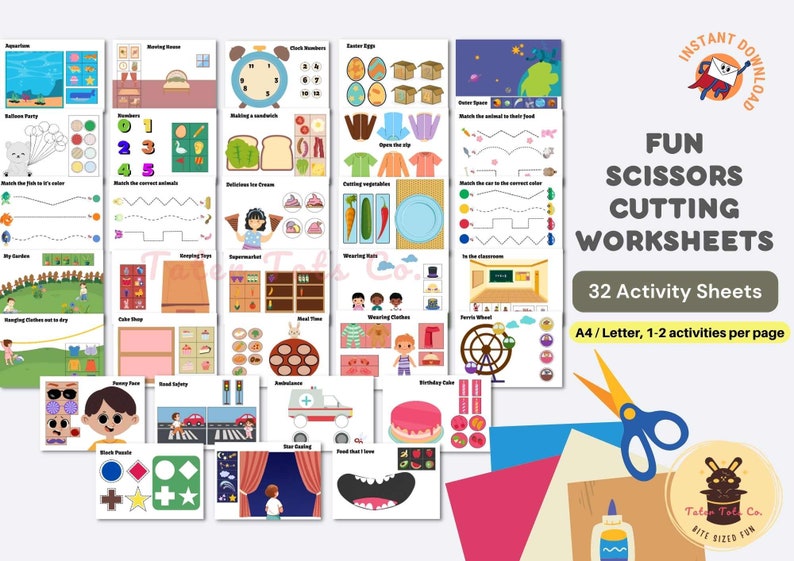
Check out our video on this spring flower-themed scissors-cutting activity that you can prepare easily with common materials found at home.
Free printable worksheets for holiday scissor practice

Looking for fun and engaging activities to help your preschoolers develop their scissor skills during the holiday season? We have curated a collection of free printable worksheets that are perfect for holiday-themed scissor practice.
These worksheets not only provide an opportunity for children to work on their fine motor skills but also incorporate the joyful spirit of the holidays. These activities will keep your little ones entertained while honing their scissors skills.
Our printable worksheets feature clear and simple designs that are easy for preschoolers to follow along. Each worksheet includes a designated area for cutting, allowing children to practice their hand-eye coordination and control as they carefully maneuver their scissors along the lines.
Download our free printable worksheets and watch as your preschoolers develop their fine motor skills while having a blast.

Download the free printable cutting practice worksheets here.
By downloading our free printable, you agree to our Terms & Conditions of usage.
We’ve also consolidated a few awesome sites that offer free cutting practice worksheets, so make sure to check them out!
Cutting Practice for kids (by KIDS Nex)
Cutting Practice for kids (by Rainbow PRINTABLES)
Conclusion
We hope you found our blog post on teaching scissor skills to preschoolers during the holidays helpful and informative. With the free printable worksheets and tips provided, you can make learning to use scissors a fun and engaging activity for your little ones.
By incorporating these activities into your holiday festivities, you can help develop fine motor skills while also fostering creativity and independence. We wish you and your preschoolers a joyful and productive holiday season filled with plenty of scissor-cut masterpieces!
If you’re looking for other toddler activity ideas, you can visit the site’s section on Toddler Activity Ideas.
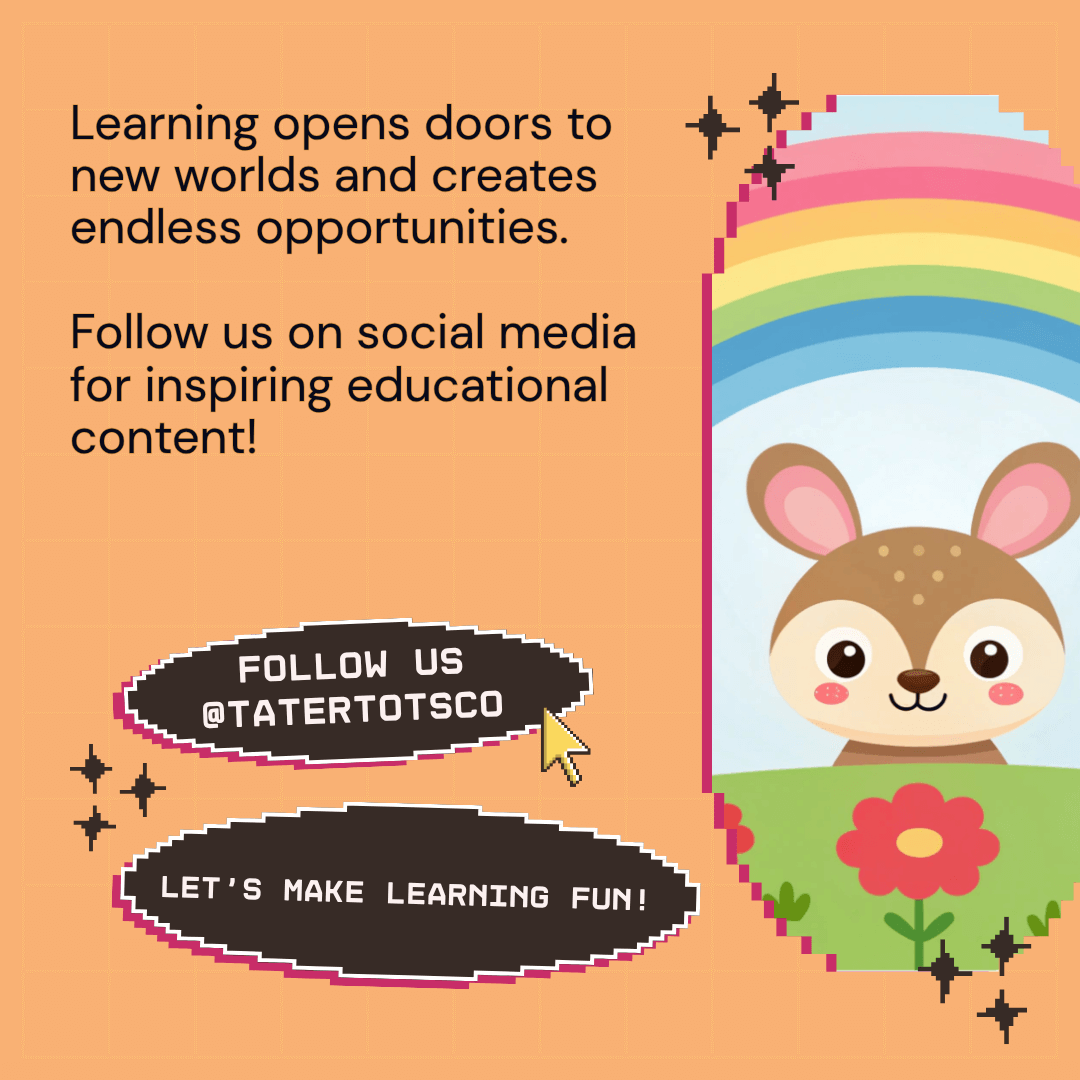
Enjoyed this freebie? Be sure to follow us on Facebook/Pinterest for the latest blog updates, freebies, and Ukulele printables.
Warmest Regards,